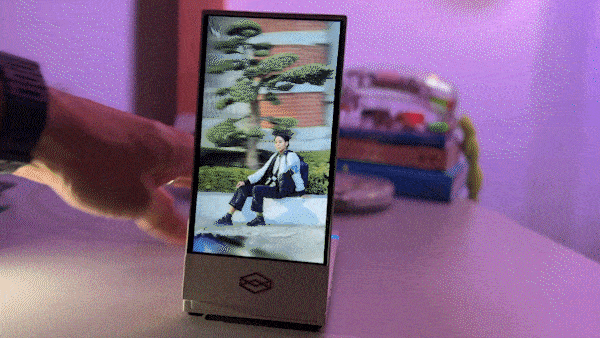The Looking Glass Factory brought personal holographic imagery to the desktop back in 2020 with the launch of the Portrait. Now the company has again taken to Kickstarter for what's billed as the "world's first portable holographic display" – the Looking Glass Go.
"Two major trends are converging: 3D spatial platforms and generative AI," said company CEO, Shawn Frayne. "Fueled by Apple’s announcement of the Vision Pro, the spatial photo capabilities in the iPhone 15, and the prevalence of 3D game engines and more powerful GPUs, spatial platforms are on the rise. At the same time, we’re seeing generative AI breathe life into 3D content creation.
"Looking Glass Go takes those two innovations and wraps them into an insanely compact system you can use anywhere. This is the future I grew up dreaming of, and I couldn’t be more excited for everyone to go into that future together."
Like the company's other products – from the Pro workstation to the Looking Glass 65 – the Go has been designed to offer users the opportunity to experience immersive 3D visuals without needing to wear special glasses or headsets.

The device will come with an AI-powered software suite to transform regular two-dimensional photos into three-dimensional holograms by "imagining dozens of perspectives of that same photo." Folks with a smartphone capable of spatial photography can also have 3D holograms created. Such things are then displayed on a 6-inch diagonal viewing area courtesy of high-precision light-field optics, which can be tilted to the desired angle.
Looking Glass reports that 3D creations, holographic art, and images scanned using Luma AI can be loaded into the device. New creations can be added to the Go thanks to built-in Wi-Fi connectivity, and the device is capable of storing more than a thousand holograms to local memory.
Using the Liteforms app and the power of ChatGPT, holographic characters can be generated from text prompts, "then customized with voice and personality" (in English or Japanese at first, with more languages to follow) to create "your own desktop companion."
Also included in the bundled software suite will be an app that allows users to play experimental spatial video, along with premium access to hologram-sharing platform Looking Glass Blocks. Though programming skills are not required to use the package, 3D modelers or coders can make use of plugins and libraries for Unity, Unreal, Blender and WebXR for advanced app creation.

The Go is reported to have twice the pixel density of previous Looking Glass displays, and is nearly 10x thinner. Input resolution is 1,440 x 2,560 pixels at 9:16 aspect, and the setup allows for a number of people to simultaneously view onscreen content.
The device is fashioned using ABS, steel and glass, measures 16 x 8 x 1.9 cm (6.3 x 3.2 x 0.76 in), and weighs in at a portable 235 g (8.3 oz). It folds flat for between-use transport, features USB-C for data from a PC or Mac system, as well as power. And the pocket-friendly Go can also wow friends on the move by cabling it to an optional powerbank.
Launched today on Kickstarter, early bird pledges currently start at US$199 – the expected retail price is $300. If all goes to plan, shipping is estimated to start from June 2024.
Looking Glass will be taking the Go to Las Vegas in January for CES 2024. The video below has more.
Source: Looking Glass Factory






